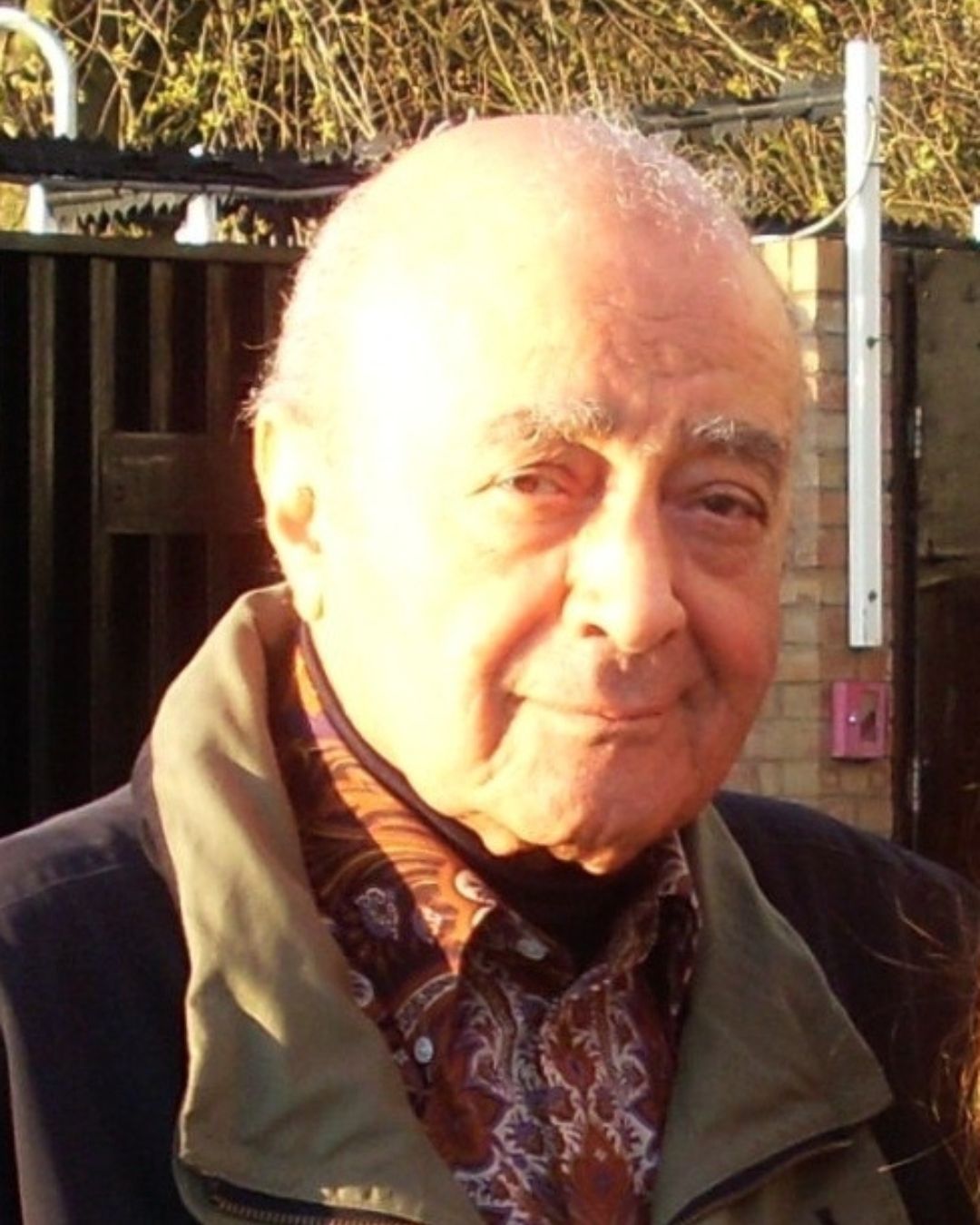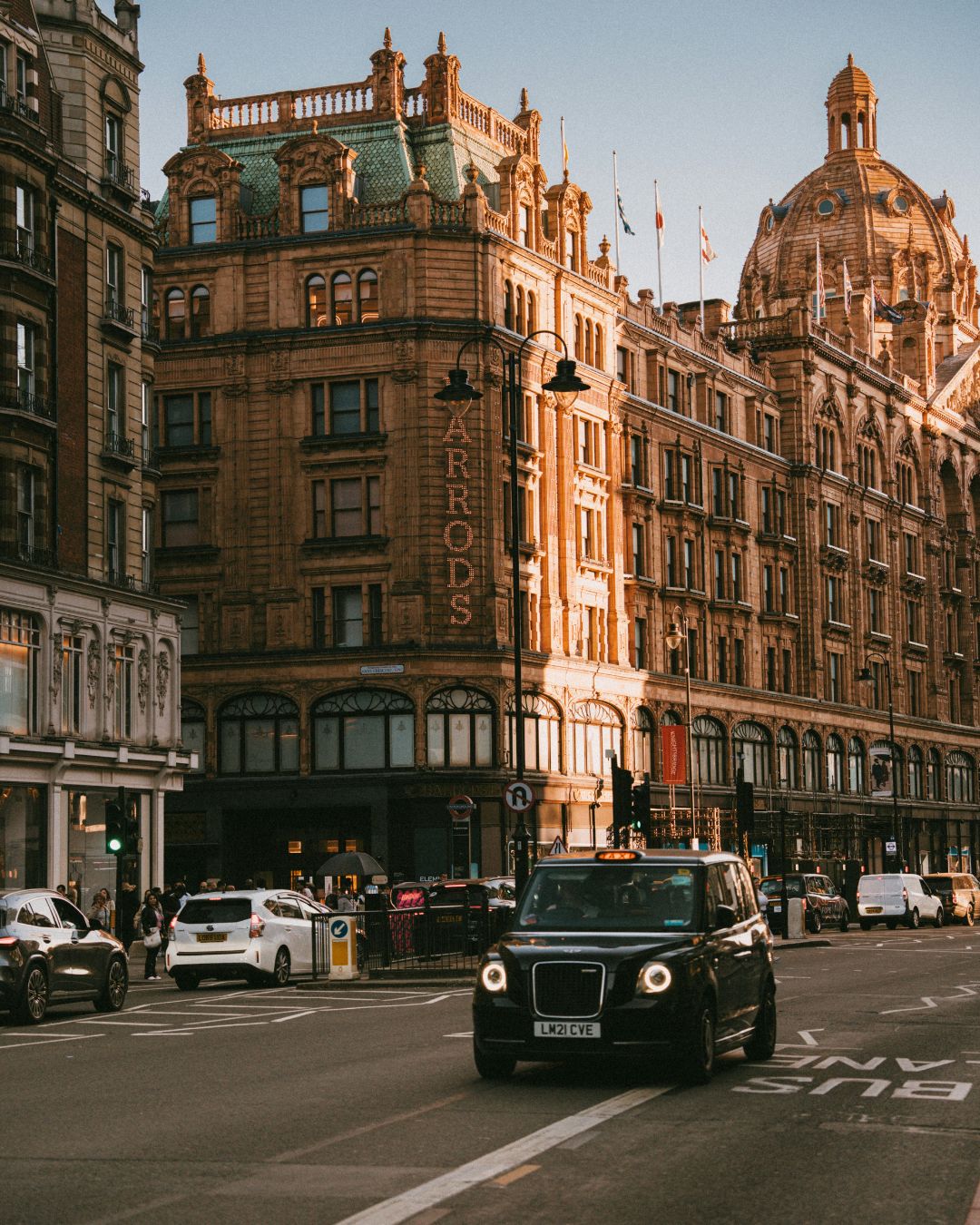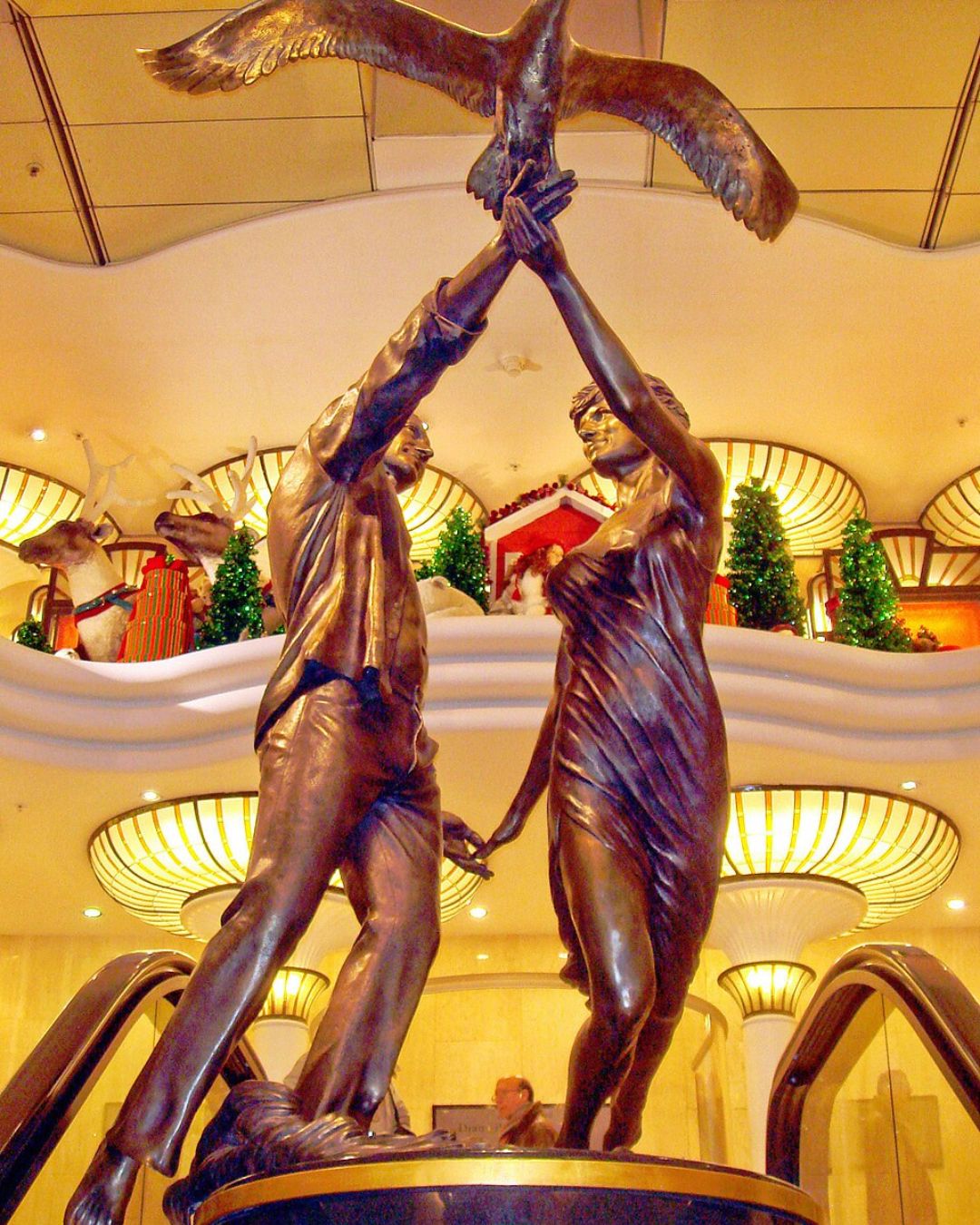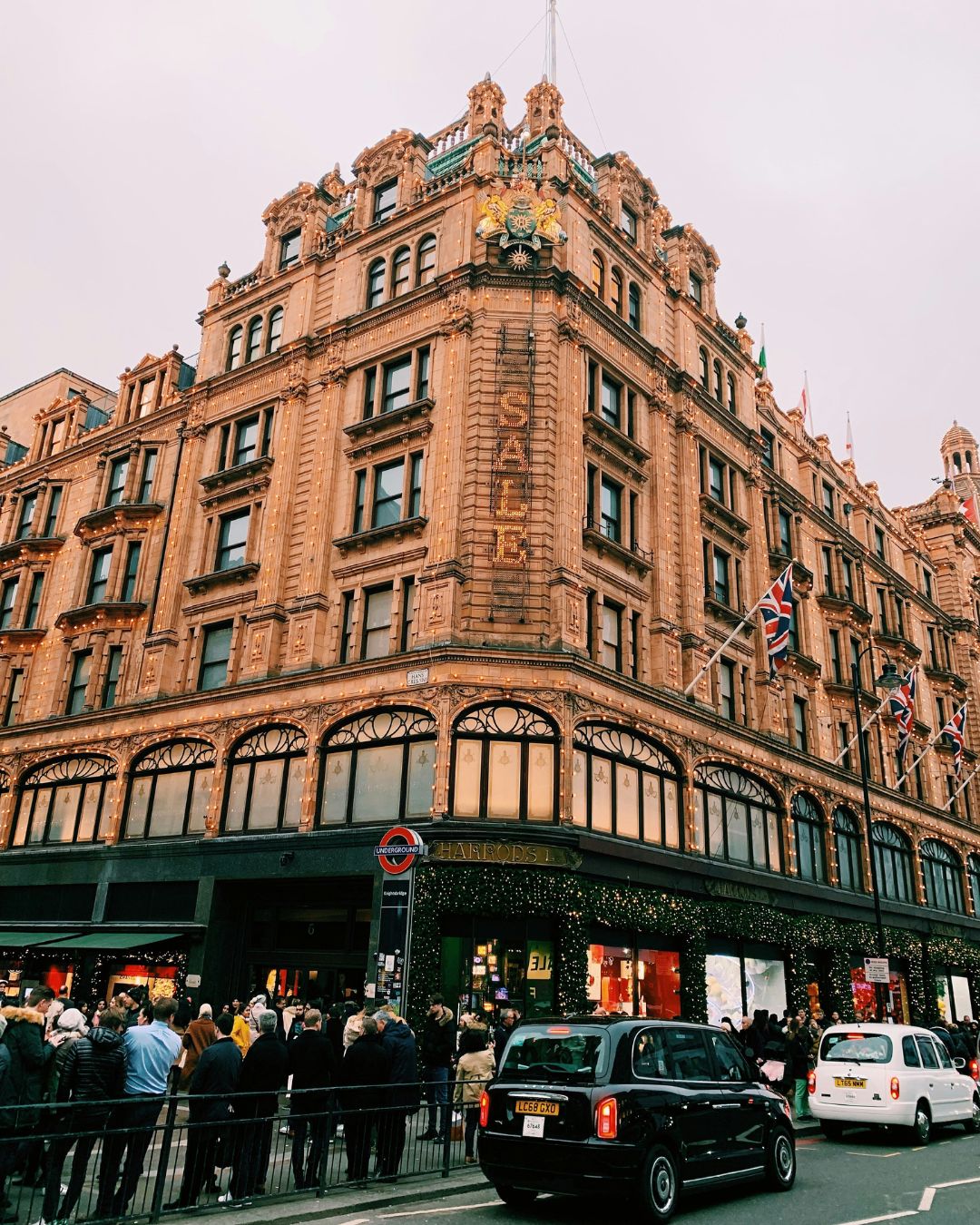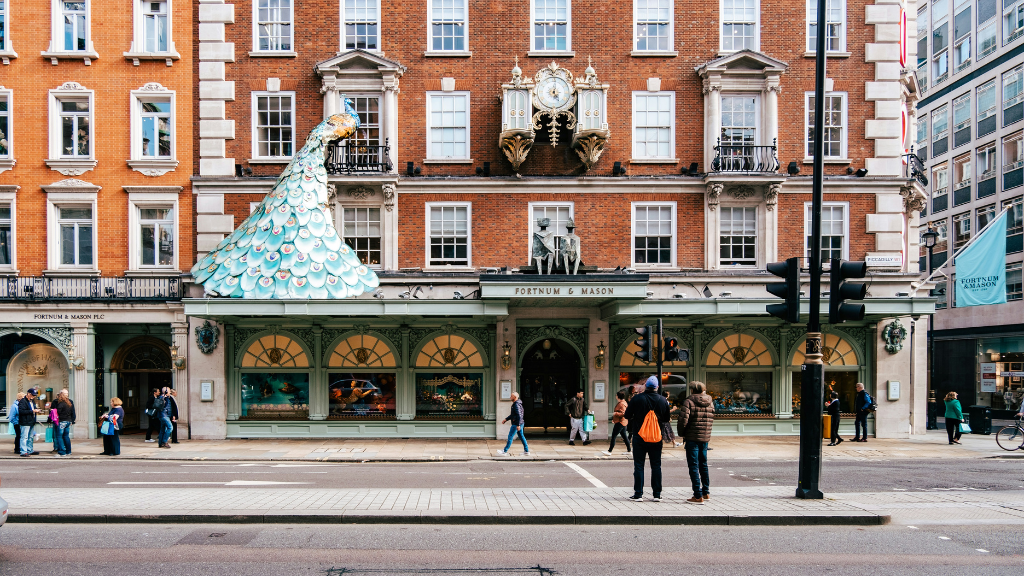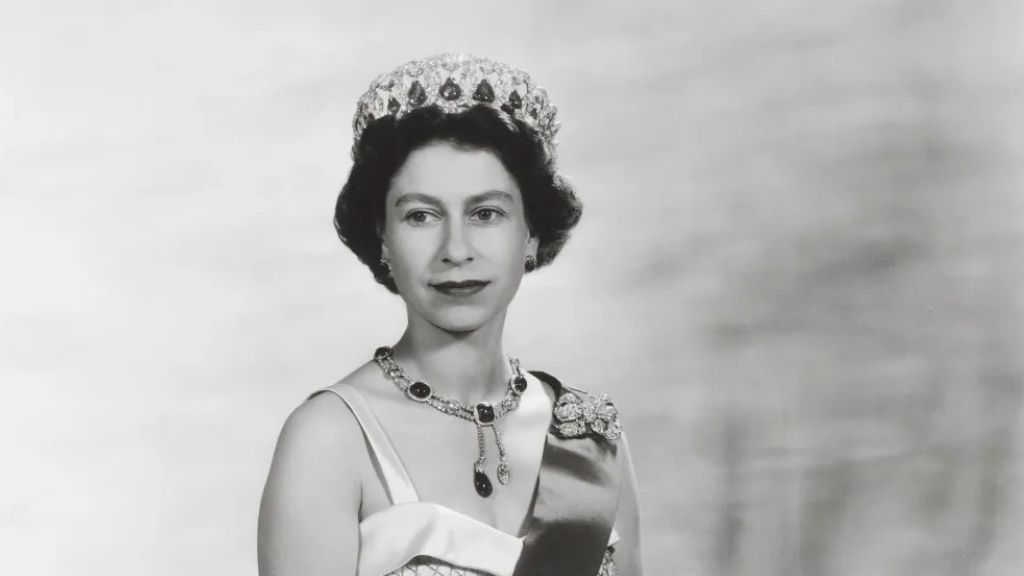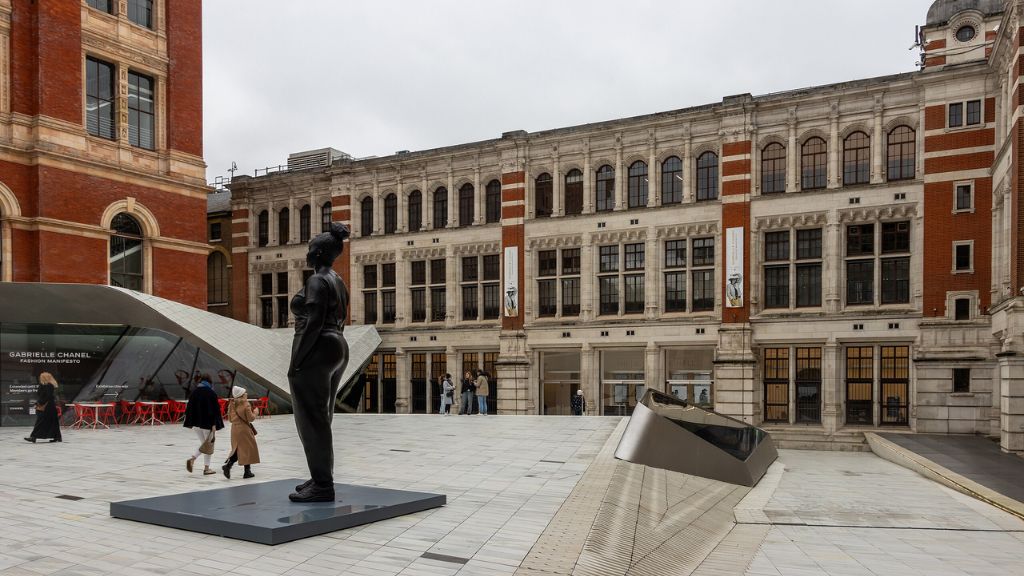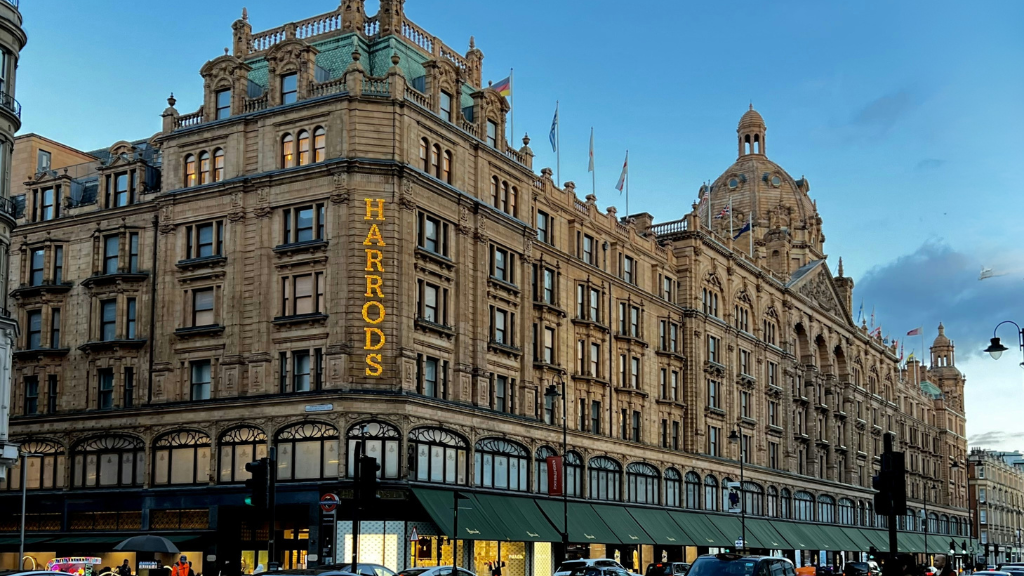
Harrods rewrites its own story: the end of the Al-Fayed era
Harrods is stepping into a new age. The legendary department store is set to unveil London’s first curved escalators — an engineering flourish found in only a handful of buildings worldwide. But a more profound shift lies beneath the polished metal and glass: this latest renovation effectively completes the dismantling of the legacy of former owner Mohamed Al-Fayed, whose name in recent years became synonymous with scandal, inquiries and allegations made by dozens of women. Afisha.London explores what the reconstruction means — and why it matters now.
This article is also available in Russian here
Harrods — the most famous department store in Europe
In 1824, Charles Henry Harrod opened a small business in south London. Twenty-five years later he moved to what was then the quiet district of Brompton, close to the future Hyde Park and the site of the Great Exhibition of 1851.
Interesting fact: the Great Exhibition introduced Londoners to the Crystal Palace in Hyde Park — Joseph Paxton’s remarkable glass pavilion that became an icon of Victorian innovation
Harrod’s business expanded rapidly: from a single room staffed by two assistants to a bustling enterprise employing around a hundred people. In 1883 the building burned to the ground, but Harrod rebuilt — this time on an even grander, more ambitious scale.
By the late nineteenth and early twentieth centuries, Harrods had become a byword for luxury. Among its clientele were Oscar Wilde, Sigmund Freud, Vivien Leigh, A. A. Milne, Charlie Chaplin and members of the Royal Family. In 1898 the store introduced England’s first “moving staircase” — the prototype escalator, so unnerving to customers that glasses of brandy were offered to steady their nerves before riding the new contraption. The current Victorian building, designed by the architect Charles Stevens, opened its doors in 1905.
Read also: Fortnum & Mason: how the queen’s footman created London’s legendary emporium
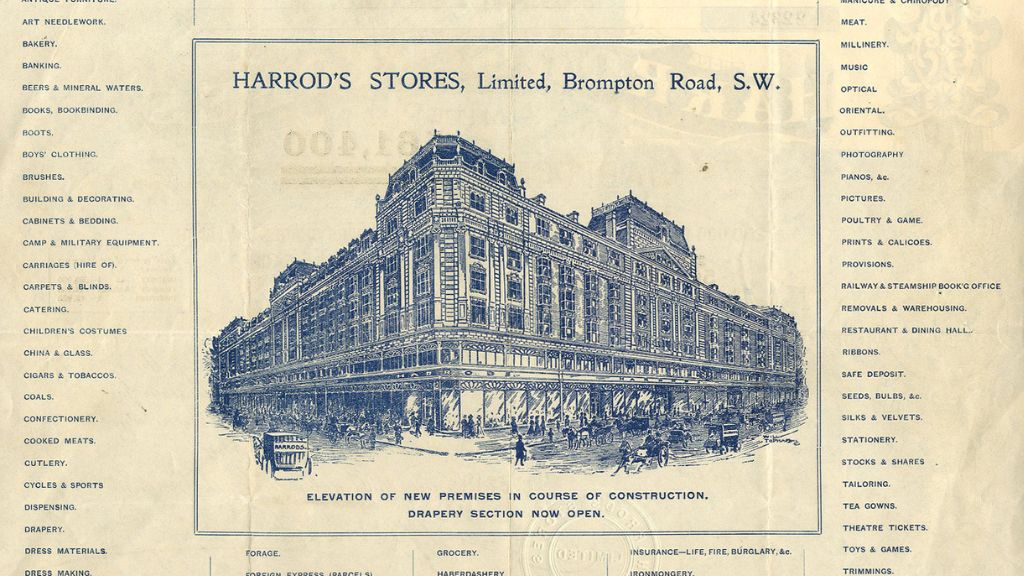
Harrods, 1903. Photo: Unbekannte Autoren und Grafiker; Scan vom EDHAC e.V., Public domain, via Wikimedia Commons
Another fascinating fact: the British architect Charles William Stephens, active at the turn of the twentieth century, was responsible for some of London’s most recognisable landmarks — including Harrods itself, the new Claridge’s, Harvey Nichols and several grand townhouses now considered architectural jewels of the capital.
The decades that followed brought a succession of owners: the 1889 stock-market listing, the 1959 acquisition by House of Fraser, the Al-Fayed era beginning in 1985, and the sale to the Qatar Investment Authority in 2010.
Who was Mohamed Al-Fayed
Mohamed Al-Fayed, born in Alexandria in 1929, began his working life selling sewing machines before building a multibillion-pound empire in property, retail and hotels. In 1985 he purchased Harrods; a decade later he bought Fulham Football Club, steering it into the Premier League and all the way to a Europa League final.
Read also: How Diaghilev’s “Saisons Russes” influenced the European art world of the 20th century
- Photo: Dushawn Jovic / Unsplash
His name hovered in the public eye for decades — from high-profile deals to rows with government and recurring scandals. He moved easily through London society, counted members of the Royal Family among his acquaintances, and frequently dominated the headlines. His most controversial crusade was his prolonged campaign over the 1997 car crash in Paris that killed his son Dodi and Diana, Princess of Wales. Al-Fayed insisted the tragedy was the result of a conspiracy, despite French and British investigations concluding it was an accident.
Mohamed Al-Fayed died in London in 2023 at the age of 94. His funeral took place after Friday prayers at the Regent’s Park Central Mosque.
‘Some of the worst cases of corporate sexual exploitation’
After his death, the long-running investigation involving 37 women who accused Al-Fayed of sexual assault was brought to its conclusion.
According to their accounts, most incidents took place between the 1980s and 2000s: in Al-Fayed’s private residences, in rooms within Harrods, at the Ritz in Paris and other locations linked to his businesses. One woman, Natasha, recalled arriving in London at 19 believing that a job at Harrods would be “the opportunity of a lifetime”, only to find herself “in a den of lies and manipulation”.
Read also: The love and hate story of artist Pablo Picasso and Ballets Russes dancer Olga Khokhlova
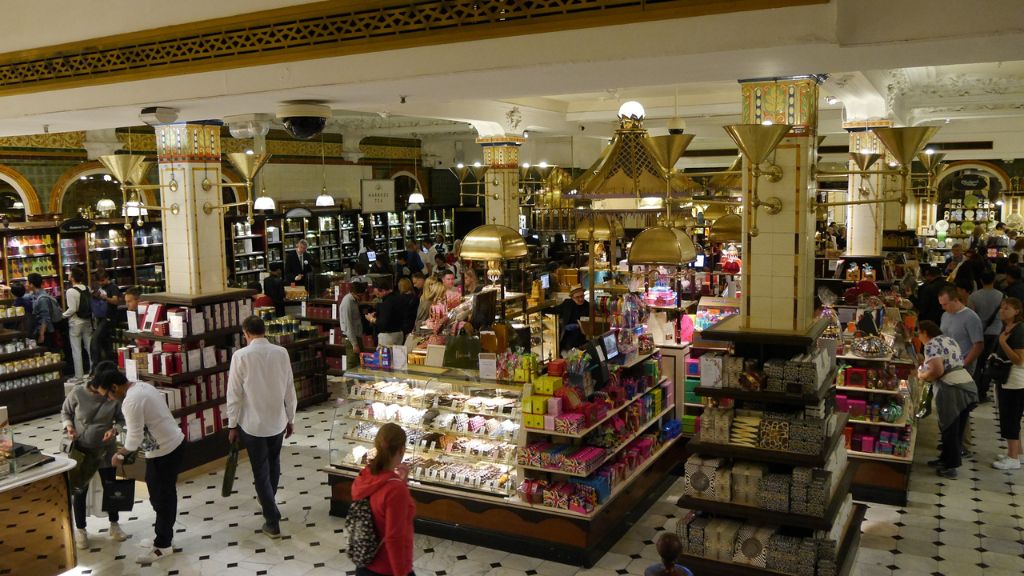
Food Hall, 2016. Photo: Edwardx, CC BY-SA 4.0, via Wikimedia Commons
Lawyers compared the case to the investigations into Jimmy Savile, Jeffrey Epstein and Harvey Weinstein: “a deliberate system of selecting young female employees”, “institutional awareness” of what was happening, and “abuse of power at the highest level”. Many of the women were between 15 and 24 years old at the time.
Harrods said it was horrified by the allegations and issued an apology to the victims, stressing that the modern organisation “has nothing to do with the era of 1985–2010” when Al-Fayed controlled the business. According to Sky News, 146 people contacted the police; more than 100 women entered Harrods’ compensation scheme; the accusations span decades — from 1977 to 2014.
Why Al-Fayed turned the department store into a personal monument
In the 1990s, Al-Fayed transformed large sections of Harrods into a vast Egyptian complex — from columns to ceilings, hieroglyphs to bronze figures. All of it, in one way or another, was dedicated to him. He fashioned himself as an heir to pharaohs, a builder of empires, a man who had rescued British retail from decline.
Busts, bas-reliefs, gilded sculptures — the entire ensemble existed with one purpose: to enshrine his presence in the store, and in London, forever.
Read also: Nicholas II and George V: A History of Friendship and Duty
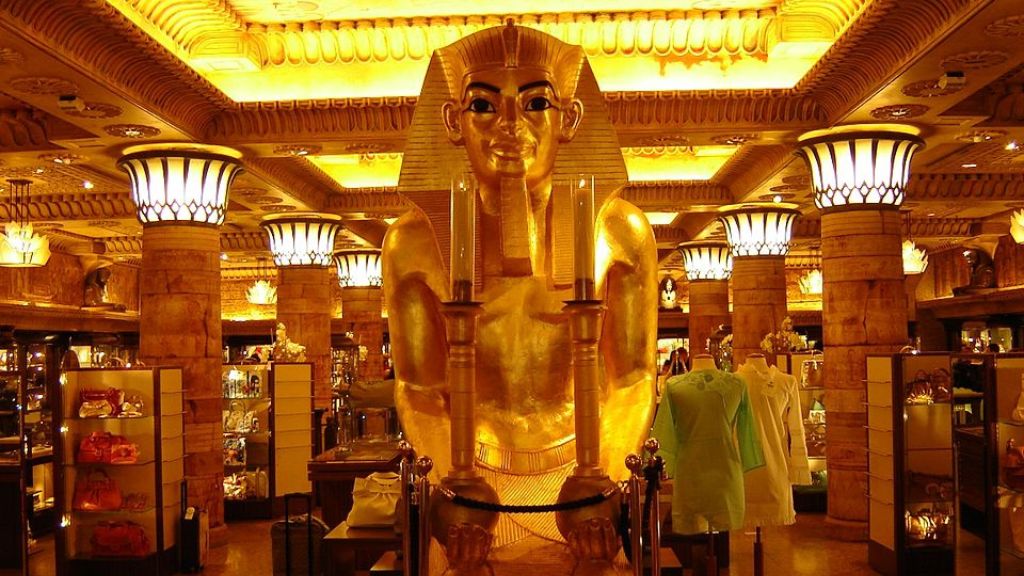
Egyptian room. Photo: I, Targeman, CC BY-SA 3.0, via Wikimedia Commons
Until the recent renovations, the principal vertical artery of the store was occupied by the so-called Egyptian escalator — a five-storey theatrical structure ornamented with statues, reliefs and numerous busts depicting Al-Fayed as a pharaoh.
According to Harrods’ official planning documents, the sixteen monumental sculpted heads amounted to “a visual glorification of a man whose victims are still alive”. The store’s architects and legal representatives explicitly stated that this was not “contested heritage” but “a public celebration of a man accused of extremely serious crimes”.
The Diana and Dodi memorial
At the foot of the Egyptian escalator, in 1998, Harrods unveiled a memorial to Diana, Princess of Wales, and Dodi Al-Fayed. Created by designer Bill Mitchell — the mastermind behind the store’s Egyptian style — the installation featured a glass casket containing the wine glass Diana used on her last evening, and the ring Dodi had given her shortly before the crash.
In 2005 a second piece was added: a bronze statue entitled Innocent Victims. The memorial quickly became a site of pilgrimage; its condolence book had to be replaced every ten days.
Read also: Лучшие сериалы по британской истории
- Innocent Victims. Photo: Bobak Ha'Eri, CC BY 3.0, via Wikimedia Commons
- Photo: Russ Martin / Unsplash
In 2018, after the change of ownership, the memorial was dismantled. The Qatari royal family chose to remove the unofficial monument as plans advanced for an official statue of Diana. The sculpture was returned to Mohamed Al-Fayed.
For many years these memorials were part of the deeply emotional and highly personal narrative of the former owner — a narrative Harrods today is keen to leave behind.
The transformation of London’s grand emporium
The new curved escalators will form part of a sweeping reconfiguration of Harrods’ central spaces — making it the first location in Europe to install these engineering novelties, previously seen only in the US and Asia. Installation will begin in 2026, led by the Japanese firm Mitsubishi, while architects from Make have pledged to restore the atmosphere of Harrods’ Edwardian halls.
Over the past decade, Make has overseen several key interventions: sixteen new escalators; the restoration of the original Edwardian staircase; and the creation of a striking stained-glass lightwell. The renewed Hans Crescent entrance also deserves attention — complete with Art Deco flourishes, original 1939 windows and suspended chandeliers recreated from archive drawings.
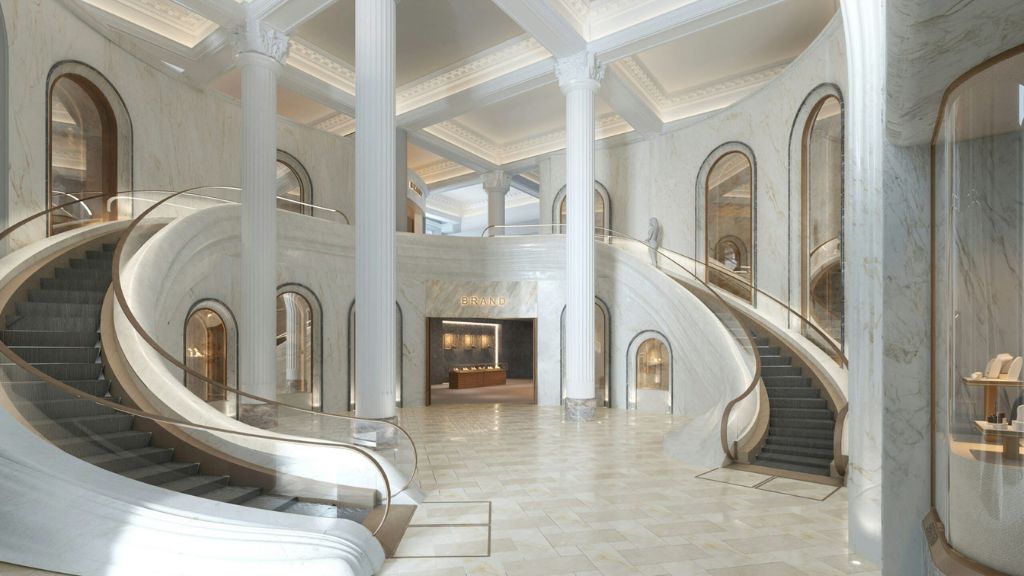
Photo: Make Architects
Despite the darker chapters of its past, Harrods today comprises more than 300 departments, roughly one million square feet of retail space and up to 15 million visitors annually. It is more than a shop: it is a London landmark, a place where a nineteenth-century retail legend continues to flourish in the luxury language of the twenty-first century.
At Harrods you can also enjoy exquisite cuisine: we recommend afternoon tea for two at The Georgian (book here) and dinner at The Grill On Fifth (book here).
Cover photo: Godefroy Le Guisquet / Unsplash
Read also:
The great and terrible English pirates: the romanticised image of sea wolves
Felix Yusupov and Princess Irina of Russia: love, riches and emigration
The history of crystal: how an English invention thrived in Russia
SUBSCRIBE
Receive our digest once a week with quality Russian events and articles


